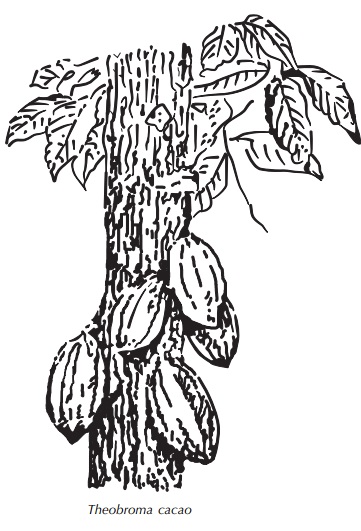Cocoa Butter
| Home | | Pharmacognosy |Chapter: Pharmacognosy and Phytochemistry : Drugs Containing Lipids
It is obtained from roasted seeds of Theobroma cacao Linn., belonging to family Sterculiaceae.
COCOA BUTTER
Synonyms
Theobroma oil, cacao butter, cocao beans, semina
theo-bromatis.
Biological Source
It is obtained from roasted seeds of Theobroma cacao Linn., belonging to family Sterculiaceae.
Geographical Source
Cocoa is cultivated in Brazil, Sri Lanka, Philippines,
Curacao, Mexico, West Africa (Ghana, Nigeria), and some parts of India.
Preparation
Cocoa seeds contain nearly 50% of cocoa butter. The seeds
are separated from pods and are allowed to ferment. Fer-mentation process takes
place at 30–40°C in tubes, boxes or in the cavities made in the earth for three
to six days and during fermentation the colour of the seeds changes from white
to dark reddish brown due to enzymatic reaction. If the seeds are not subjected
for the process of fermentation and dried in sun, then they are more
astringent, bitter tasting and of less value. After fermentation, the seeds are
roasted at 100–140°C to remove the acetic acid and water present in the seeds
and facilitate removal of seed coat also. The seeds are cooled immediately and
are fed into nibbling machine to remove the shells followed by winnowing. The
kernels are then fed into hot rollers which yield a pasty mass containing cocoa
butter. The pasty mass is further purified to give cocoa butter
Characteristics
Cocoa butter is yellowish white solid and brittle below
25°C. It has pleasant chocolate odour and taste. It is insoluble in water but
soluble in chloroform, petroleum ether, ether and benzene. Specific gravity
ranges from 0.858 to 0.864, melting point between 30°C and 35°C, refractive
index varies from 1.4637 to 1.4578, saponification value is 188–195, and iodine
value 35–40.

Chemical Constituents
It consists of glycerides of stearic (34%), palmitic (25%),
oleic (37%) acids, and small amount of linoleic acids and arachidic acid.
Glyceride structure is responsible for non-greasiness of product.
Uses
It is used as an emollient, as a base for suppositories and
ointments, manufacture of creams, and toilet soaps. It reduces the formation of
stretch marks during pregnancy by keeping the skin supple. It is used as an
ingredient in lotion bars, lip balms, body butters, soaps, and belly balms for
expectant mothers.
